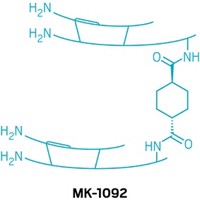Advertisement
Grab your lab coat. Let's get started
Welcome!
Welcome!
Create an account below to get 6 C&EN articles per month, receive newsletters and more - all free.
It seems this is your first time logging in online. Please enter the following information to continue.
As an ACS member you automatically get access to this site. All we need is few more details to create your reading experience.
Not you? Sign in with a different account.
Not you? Sign in with a different account.
ERROR 1
ERROR 1
ERROR 2
ERROR 2
ERROR 2
ERROR 2
ERROR 2
Password and Confirm password must match.
If you have an ACS member number, please enter it here so we can link this account to your membership. (optional)
ERROR 2
ACS values your privacy. By submitting your information, you are gaining access to C&EN and subscribing to our weekly newsletter. We use the information you provide to make your reading experience better, and we will never sell your data to third party members.
Biological Chemistry
Sugar Rules For Protein Drugs
Guidelines show protein-drug designers where they can install sugars to improve stability and pharmacokinetics
by Amanda T. Yarnell
February 7, 2011
| A version of this story appeared in
Volume 89, Issue 6
A simple list of engineering rules promises to make it easier for drug designers to use sugars to stabilize protein-based drugs (Science, DOI: 10.1126/science.1198461). Boosting the stability of these drugs is expected to increase their half-life and thus potentially decrease how frequently patients must inject them, says Jeffery W. Kelly of Scripps Research Institute, who developed the rules with Scripps colleague Evan T. Powers. The rules point drug designers to specific parts of proteins where they can install standard N-linked sugars to prevent protein aggregation and degradation. Many naturally occurring proteins get a stability boost from sugars that are appended to specific asparagine side chains. But drug designers aiming to mimic that strategy have had to resort to tedious and frustrating trial and error to find appropriate spots to install sugars. Instead, the new rules suggest placing sugars at an asparagine residue in a so-called reverse turn bordered by phenylalanine and threonine residues. This modification stabilizes various kinds of proteins, Kelly and Powers’ team reports. Proteins modified in this way are also more readily manufactured by cells. So the findings should “streamline protein-drug optimization quite a bit,” Powers says.





Join the conversation
Contact the reporter
Submit a Letter to the Editor for publication
Engage with us on Twitter